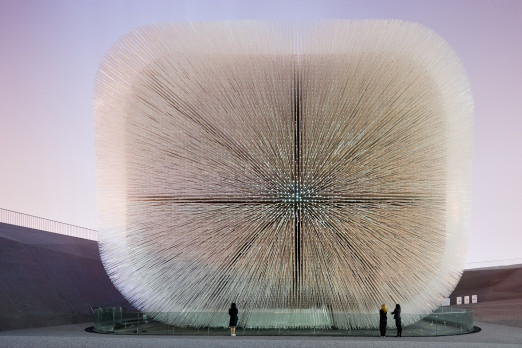Four design students from Imperial College and the Royal College of Art have constructed a series of machines which transform seafood waste into a flexible bioplastic material.
The bioplastic ranges from a translucent orange to an opaque brown and illustrates how the biological elements found in sea creatures' shells can be used to create an alternative material to single-use plastics.
Designed by students Insiya Jafferjee, Amir Afshar, Ed Jones and Andrew Edwards, the project called ‘Shellworks’ takes (waste) lobster shells and transforms it into a sustainable alternative to petroleum-based plastic. The team’s bioplastic is recyclable and also biodegrades over a period of time.
The main material within the bioplastic is chitin — a polymer found naturally in lobster shells. Although abundant in our natural world, chitin needs to be chemically extracted from its source before it can be transformed into a useable material. The Shellworks team have made four different machines which extract the polymer from the shells which they then mould into cups or packaging.
The bioplastic is then left to dry which allows it to set. If the product no longer has a use, the bioplastic can also be recycled easily and turned back into the bioplastic solution. This can be done using a hydro-recycler machine which gradually transforms the plastic back into its liquid form. After this, the solution can be poured into the soil and be used as an effective non-polluting fertiliser.
To view more about the project, visit the designers' website and their Instagram page.
 All image credits: The Shellworks: Andrew Edwards, Amir Afshar, Edward Jones & Insiya Jafferjee.
All image credits: The Shellworks: Andrew Edwards, Amir Afshar, Edward Jones & Insiya Jafferjee.





